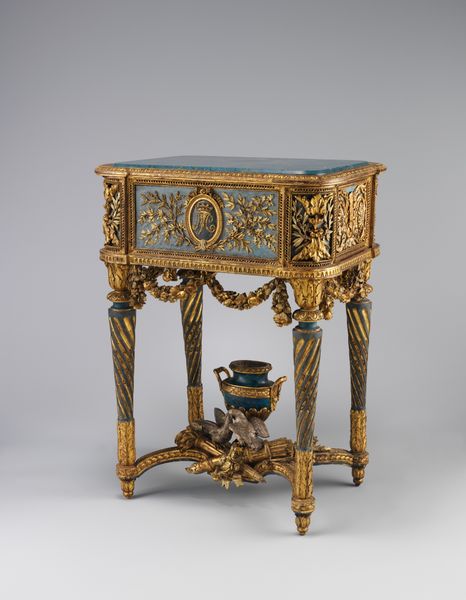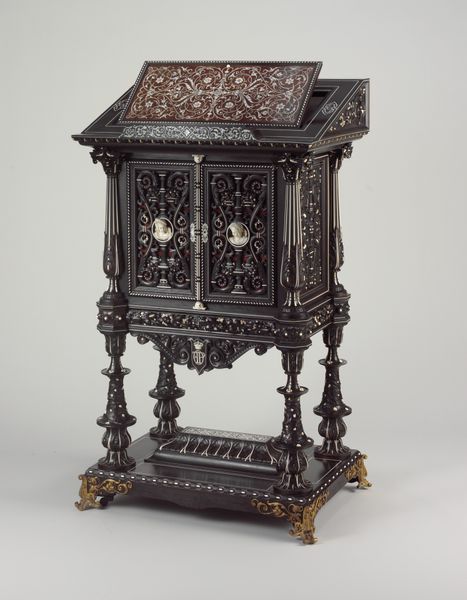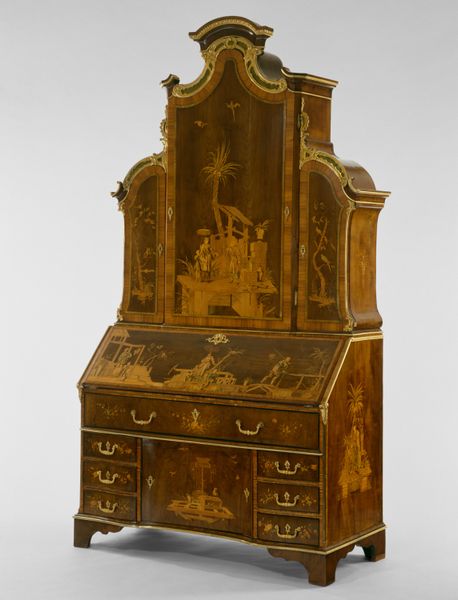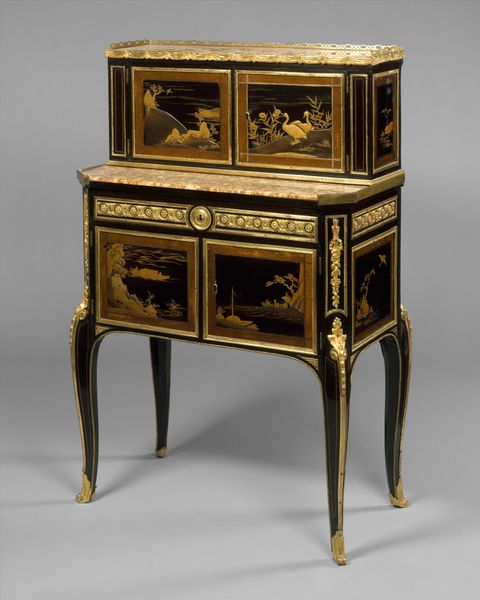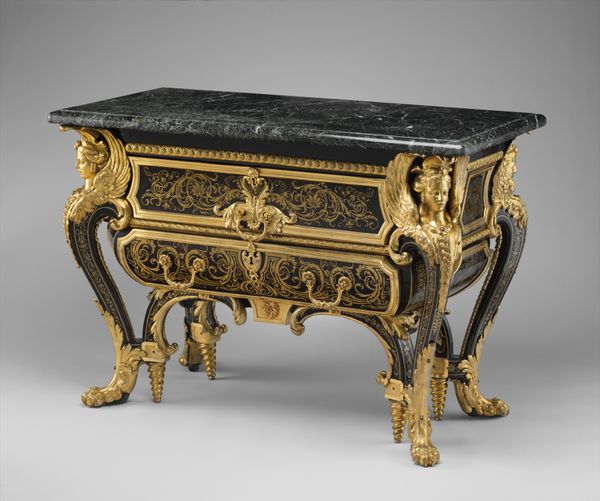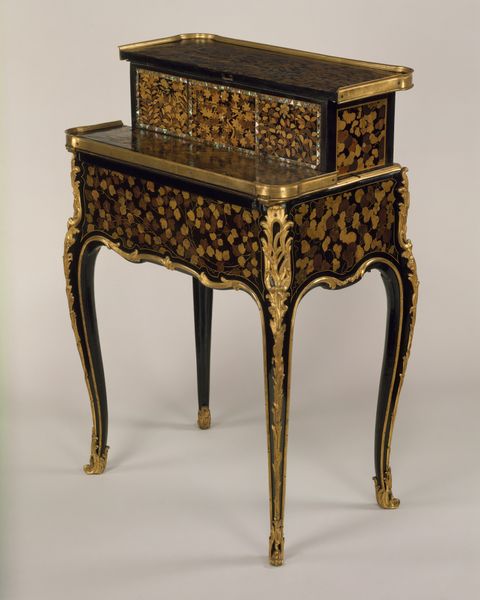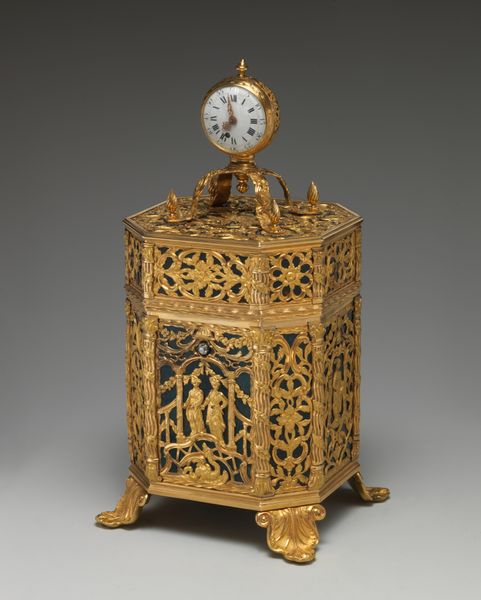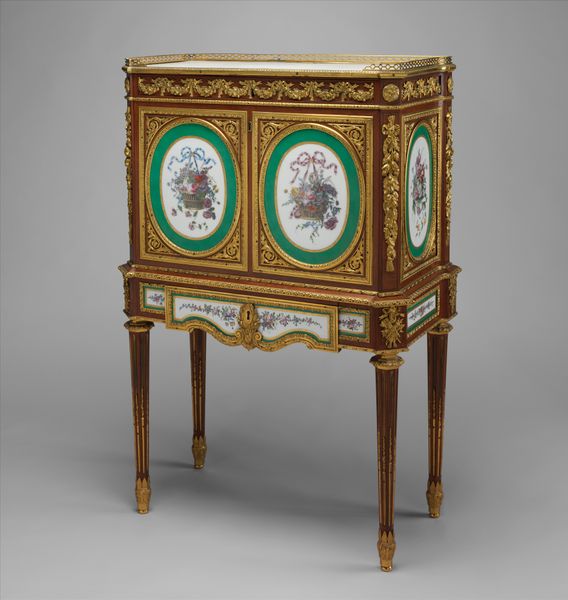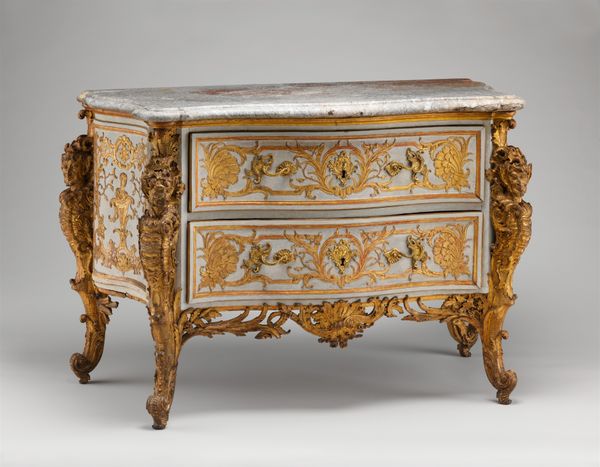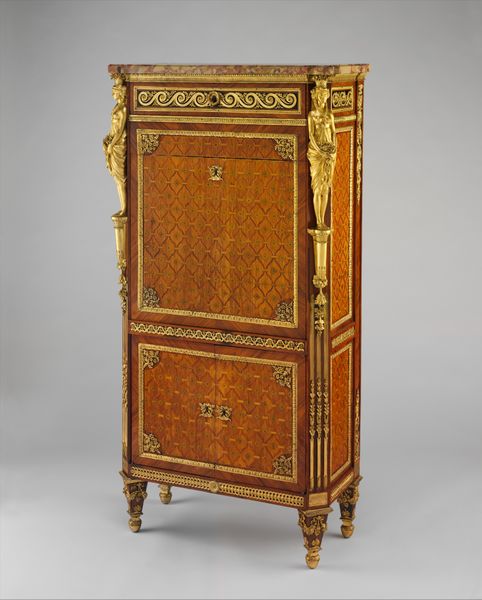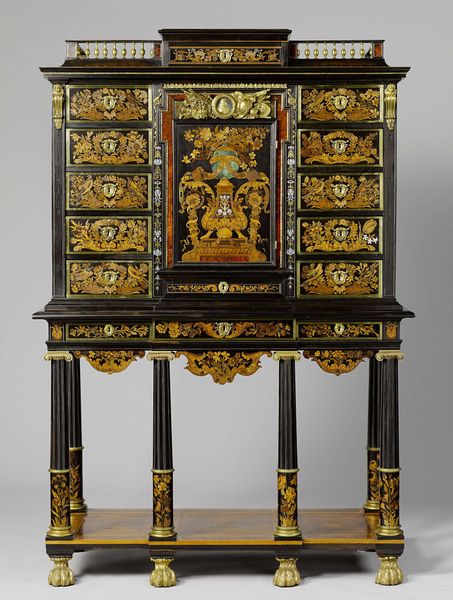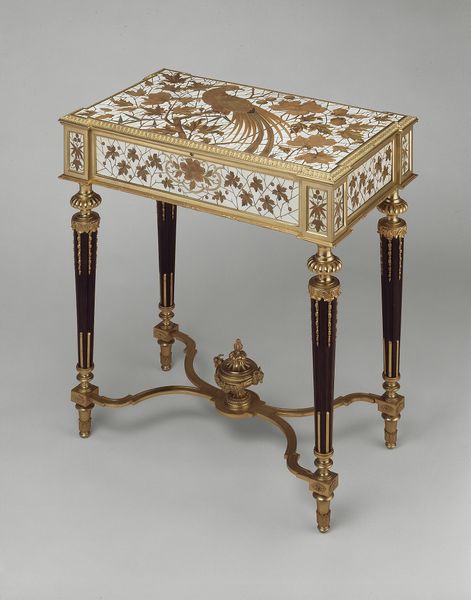
metal, sculpture, wood
#
baroque
#
metal
#
sculpture
#
sculpture
#
wood
#
decorative-art
Dimensions: height 139.8 cm, width 91.7 cm, depth 66.7 cm, height 84.7 cm, width 91.7 cm, depth 66.4 cm, height 84.7 cm, width 86.5 cm, depth 61.5 cm
Copyright: Rijks Museum: Open Domain
Editor: We are looking at *Twee toiletkoffers*, created around 1685-1690. The piece is attributed to André Charles Boulle and it seems to be crafted from a combination of wood and metal. It's so ornate. How do you approach an object like this from a formalist perspective? Curator: With great care. Initially, the density of the decoration threatens to overwhelm any coherent reading. One must systematically dissect the composition. Note first the interplay between the dark ground and the shimmering gilt detailing. It isn’t mere decoration; it is carefully structured, guiding the eye across the surfaces, creating visual hierarchies. Editor: So you’re focusing on how the materials and design elements interact to create the viewing experience? Curator: Precisely. Consider the curvaceous lines—the cabriole legs, the scrollwork. How do they contribute to the overall sense of Baroque extravagance? Look at the vertical thrust of the legs opposing the horizontal spread of the chest, forming an underlying structure amidst all the seeming excess. Editor: It’s interesting how the legs really ground such a decorative piece. What about the repeated motifs, do you find meaning in those? Curator: Motifs function structurally. Repetition establishes rhythm, unity. These aren't just aesthetic choices; they reinforce the formal relationships. One must ask: what visual echoes are present? What symmetries or asymmetries subtly influence perception? The aim is to decode the visual language itself. Editor: So it's about stripping back the cultural and historical context to focus purely on what's visually present? Curator: It's about understanding how visual elements, irrespective of explicit historical narrative, construct meaning and impact perception. We analyze to appreciate. Editor: Thank you, this makes the piece much more fascinating than simply ornate. I see how each element contributes to an aesthetic whole.
Comments
No comments
Be the first to comment and join the conversation on the ultimate creative platform.

